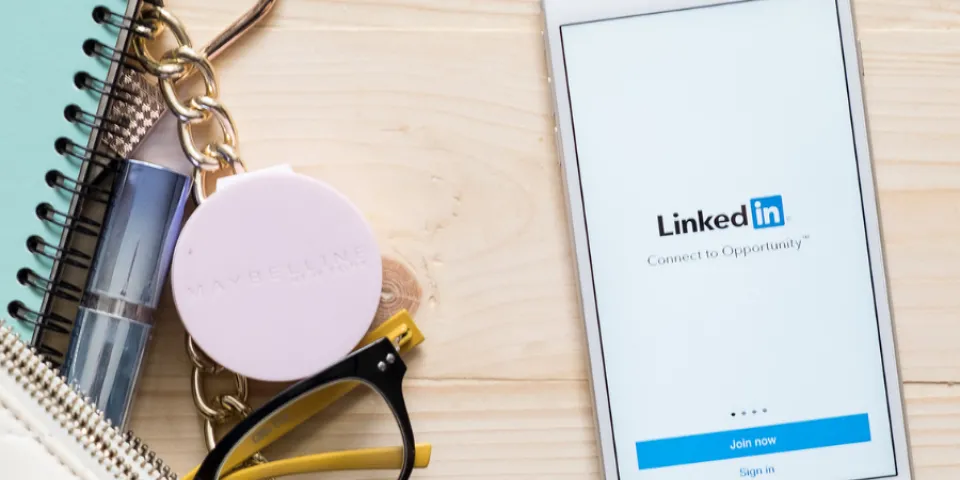Latest 
 Career Development Denise Alexander
Career Development Denise Alexander
Recent Blog Posts


LinkedIn is a vital social media platform for professionals, whether you’re just starting out, looking to make a career change, trying to learn more about an industry or company, and/or looking to build your brand.
LinkedIn tends to be more professional than casual, but you can still have some fun with it. As you build or burnish your LinkedIn profile, try to avoid these common mistakes:
It’s not always a bad idea to connect with others on LinkedIn who you don’t know … but you better have a good reason.
If you’re trying to connect with others you don’t know, realize that many professionals on LinkedIn, especially those who are in high-profile positions and/or are in charge of a lot of hiring decisions, get a lot of unsolicited requests to connect. They tend to turn down people they don’t know, particularly if the person provides no reason to connect.
However, if you have a good reason to connect with someone on LinkedIn, consider sending a personal note. For example, if you want to connect with someone who works at a company where you applied for a job, let them know that you’re reaching out because you want to learn more about the company and the position.
If you’re the one getting contacted by people you don’t know who wants to connect, think about whether that makes sense for you. It’s not just that you might clog up your connections with someone who you don’t know. It also can be dangerous - there are fake profiles and bots on LinkedIn who might try to draw you into unseemly business deals or false promises.
One ideal rule of thumb is the five-minute rule – if you’ve met this person, talked to them for several minutes and they seem like a decent connection, go for it. You might also get a good impression of an online conversation. But realize you might be asked at some point to connect this person to someone else in your group – would you want to do that?
Think of your profile as your elevator pitch: it should be quick, easy to read and provide the person visiting your profile a quick summary of who you are and what you’re looking for. Be sure you have your job title listed, your first and last name, where you reside and a quick quip about yourself. Make sure your “about me” section is only a few sentences max – the average reader doesn’t want more than that!
While you’re filling in your profile, look into other items that LinkedIn offers, such as links. You can add links to personal sites, which is a great way for you to share a portfolio of your work. That’s just one idea, but there’s plenty of other items you could add that help your profile.
LinkedIn is an ideal platform to describe the work that you do, which is why one of the most important things you should do is take the time to complete your work history. Unless you do this, no one is going to know what skills you have or what industries you can work in! This should be one of your first and highest priorities on the platform – be sure to fill it out properly and fully.
When people visit your LinkedIn profile, they don’t want to wade through a lot of unimportant information about your experience. They want a summary that is complete and specific.
Try to write your job history the way you would on a resume: use a few or several bullet points. You should list only important highlights and not every little thing you’ve done. And make sure to focus on results, not just tasks that were assigned to you. Just like your resume, your work history on LinkedIn is supposed to draw the readers’ interest so they ask you for more detail about why you were so successful.
Just under your work history, you’ll find a “skills” section. Be sure to not ignore this – it’s more important than you’d think! What you list here will allow recruiters to find you, so list as many skills as you possibly can that you feel confident in. Also, be sure to ask for endorsements and endorse others.
If you weren’t aware, there’s an entire “jobs” section on LinkedIn that works similarly to job hunting sites like Monster and Indeed. Filling out your work history and skills isn’t always enough to get job offers – be sure to browse the jobs tab. If you’ve adequately filled out your profile, you’ll also be able to send that information to some employers without needing to add your resume.
LinkedIn users expect a professional tone on the platform. You can be somewhat casual, but it’s not a social network like Instagram where you’d snap a photo and share with your connections what you’re currently doing no matter what it is.
If you want to post something about the industry you work in, great! If not, it’s probably best to leave it off your profile. Be sure to be professional in all your engagements as well. Find a balance between being casual and professional and you’ll be just fine.
It’s kind of like working in a business casual office: you’re there to work and wouldn’t talk loudly about a crazy party you went to the night before. However, you might discuss information about a business trend that could affect your company, client or customers.
Engagement on social media is a two-way street! If you build connections but don’t engage with anything they post, odds are you won’t get much of a response either. Be sure to congratulate people on work anniversaries, new jobs, etc. You’d be surprised how far a simple compliment can go toward building goodwill, and your profile.
LinkedIn has a wide array of uses, and much of the value comes from what you put in. If you need help, Herzing’s Career Development team has plenty of experience with LinkedIn and would love to assist you.
BLS pay estimates calculate the median annual wage for various occupations. Per the BLS the median wage for an occupation is: "The wage at which half of the workers in the occupation earned more than that amount, and half earned less. Median wage data are from the BLS Occupational Employment and Wage Statistics survey." Bureau of Labor Statistics (BLS), U.S. Department of Labor, Occupational Outlook Handbook 2024. BLS median wage estimates do not represent entry-level wages and/or salaries. Multiple factors, including prior experience, age, geographic market in which you want to work, and degree level and field, will affect career outcomes, including starting salary and earnings as an experienced employee. Herzing neither represents that its graduates will earn the median salaries calculated by BLS for a particular job nor guarantees that graduation from its program will result in a job, promotion, particular wage or salary, or other career growth.
Get the latest news you need to know, from study hacks to interview tips to career advancement. Have it delivered right to your inbox biweekly.